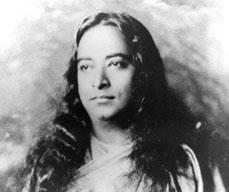
Looking at the Autobiography of a Yogi of Yogananda’s time, one gets the impression that SRF was intended to also run a World Brotherhood Colony. Yogananda writes in the 3rd edition, 1951, published a few months before his passing:
“Happy years sped by, filled with intense activities. A Self-Realization-Fellowship (SRF) World-Brotherhood Colony, envisioned in 1937 and firmly established by 1947, serves as a model for smaller SRF colonies. The buildings on the thirty-acre tract in Encinitas include several hermitages, a gift shop, a cafe, and a hotel for the accommodation of SRF members and the public. The beautiful grounds contain a lotus pool and a large swimming pool. A series of white pillars facing the highway are adorned with golden lotuses.
Colony activities include the many-sided training of disciples in accordance with SRF ideals, and the development of an extensive agricultural project that provides fresh vegetables for SRF residents at the Encinitas and Los Angeles centers.
‘He hath made of one blood all nations of men!’ An urgent need on this war-torn earth is the founding, on spiritual basis, of numerous world-brotherhood colonies.”
Encinitas was, for Yogananda, in part a World Brotherhood Colony. So was Mt. Washington: in his printed Lake Shrine dedication talk Yogananda stated that “we have started trial colonies at Encinitas and at Mt. Washington in Los Angeles, and we have some colonies in India too. Ours is not a church in the ordinary sense.”
Monastics and non-monastics lived in these places. And Encinitas, we read, was supposed to serve as a model for other SRF colonies.
Yogananda’s Lake Shrine dedication talk (1950) is recorded, and in it he says: “I am not starting churches and other new cults. I don’t believe in it!” And, “The greatest thing in the church movement is the building of colonies!” If that was his conviction, wouldn’t he have wanted his organization to run them?
Maybe, but maybe not. True, he included the Colonies as part of his SRF Aims and Ideals, which were printed in that form until 1958. Still, could it be that Yogananda changed his mind for a specific reason? Was SRF not meant to build colonies after all?
Indeed, in 1955 Yogananda appeared to Daya Mata (see chapter 3), inspiring her to develop SRF along monastic lines. The colony idea was abandoned, and she admitted that she “was not interested.” Her heart was completely monastic. Could she have built and nourished colonies? On the other hand Yogananda told Kriyananda repeatedly, and so did Rajarsi in 1954, that “you have a great work to do,” which Kriyananda understood to be the building of colonies. Kriyananda had vowed to do so already during Yogananda’s lifetime, when he heard his Guru talk with intense power about the need for them (as reported in the SRF magazine). In this way two separate works began to flourish, not always without difficulties.
Here’s a little historical question to ponder:
In religion, we seem to observe a particular phenomenon: often when a great Master leaves the world his following splits, reflecting the law of duality. One side represents the lunar ray – orthodox, protective, and conservative. The other side represents the solar ray – expansive, creative, and less conventional. In Christianity, St. Peter taught that Christ’s teaching should be restricted to the Jews. St. Paul disagreed, and spread it creatively everywhere, and non-Jews could freely become Christians. In Islam we have the very conservative Shiites (majority in Iran and Iraq), and the less conservative Sunnites (though traditional and mainstream, they incorporated various customs and usages which arose historically, but which have no roots in the Koran). The Jews too have a strong orthodox and liberal division. In Buddhism we see the more conservative Hinayana branch, and the more liberal and expansive Mahayana branch.
Question: As history unfolds and develops, will we also see in Yogananda’s case this natural dual development? And is his wise hand behind it all?
